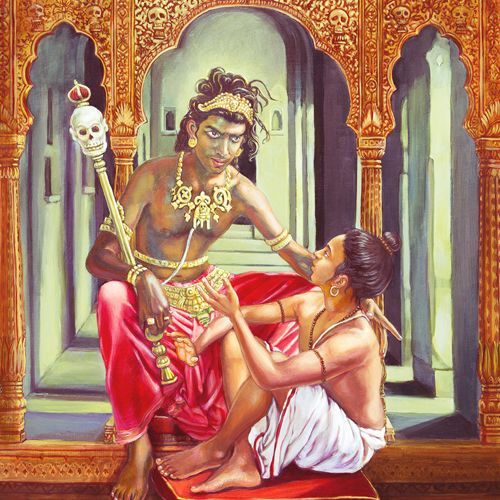
The Story of Nachiketa: A Profound Journey of Self-Realisation
Introduction:
The ancient Hindu scriptures are replete with fascinating tales that impart profound wisdom and teachings. One such captivating story is that of Nachiketa, a young seeker of knowledge who embarked on a spiritual quest to unravel the mysteries of life and death. Rooted in the ancient texts of the Upanishads, the story of Nachiketa provides invaluable insights into the nature of existence, the eternal soul, and the path to enlightenment. This article delves deep into the tale of Nachiketa, offering a comprehensive analytical study of its symbolism, philosophical significance, and spiritual implications.
- The Context and Characters:
The story of Nachiketa finds its origins in the Katha Upanishad, one of the principal Upanishads. The narrative revolves around three central characters: Nachiketa, the young seeker; Yama, the god of death; and Nachiketa's father, Vajasravasa. As the story unfolds, Vajasravasa, in a moment of frustration, makes a hasty vow, inadvertently offering his son, Nachiketa, to Yama.

- Nachiketa's Encounter with Yama:
In accordance with the vow, Nachiketa journeys to the realm of Yama, the abode of death. There, he encounters various challenges and tests his resolve. Despite being offered material possessions and luxuries, Nachiketa remains steadfast in his pursuit of spiritual knowledge. This unwavering determination and thirst for truth exemplify his exceptional character.
III. The Dialogue between Nachiketa and Yama:
The interactions between Nachiketa and Yama form the crux of the story, as they engage in profound philosophical discussions that reveal the nature of the soul and the essence of existence. Nachiketa fearlessly questions Yama about life, death, and the ultimate reality.

The Symbolism and Philosophical Significance:
- Nachiketa's Journey as an Allegory: Nachiketa's journey to the realm of Yama symbolizes the quest for self-realization and the pursuit of higher knowledge. It represents the longing within every human being to comprehend the mysteries of life and transcend the realm of transient experiences.
- The Three Boons: As Nachiketa converses with Yama, he requests three boons. The first boon he seeks is the restoration of peace between himself and his father, which signifies the reconciliation of one's spiritual pursuits with their worldly duties. The second boon involves receiving knowledge of the sacrificial fire, emblematic of the rituals and disciplines necessary for spiritual progress. Lastly, Nachiketa asks for knowledge of what happens after death, exploring the profound question of the soul's eternal nature.
- The Dichotomy of the Transient and the Eternal: Through Nachiketa's conversation with Yama, the story emphasizes the distinction between the ephemeral world of appearances and the enduring reality of the soul. It delves into the nature of the eternal Self (Atman) and the impermanence of material existence, guiding seekers toward recognizing their true essence beyond the transient realm.

Spiritual Teachings and Life Lessons:
- The Importance of Spiritual Aspiration: Nachiketa's unwavering dedication to seeking knowledge inspires individuals to cultivate a thirst for spiritual wisdom. His courage to question the divine and his perseverance in the face of distractions teach us to prioritize the pursuit of truth above all else.
- The Integration of Spirituality and Worldly Responsibilities: The story of Nachiketa emphasizes the harmonious integration of spiritual aspirations with worldly duties. It teaches us that one need not renounce their responsibilities but rather align their actions with the higher principles of truth and righteousness.
- Understanding the Nature of the Soul: Nachiketa's inquiry into the nature of the soul elucidates the concept of the eternal Self and its interconnectedness with the divine. It invites us to delve into self-reflection, recognize our inner divinity, and strive for self-realization.
- References in Hindu Texts:

The story of Nachiketa is prominently mentioned in the Katha Upanishad, a text of the Yajurveda. This Upanishad serves as a profound source of knowledge and contemplation, providing seekers with valuable insights into the nature of reality and the path to liberation.
Conclusion:
The story of Nachiketa resonates with spiritual seekers across generations, offering a treasure trove of wisdom and guidance. Through his remarkable journey and insightful conversations with Yama, Nachiketa imparts timeless teachings on the nature of the soul, the pursuit of truth, and the integration of spirituality into daily life. The story serves as a profound reminder of the eternal quest for self-realization that lies within each one of us.
By Manshi Singh
(The images used in this blog post are not owned by Anime Devta, they are just to help the readers)

